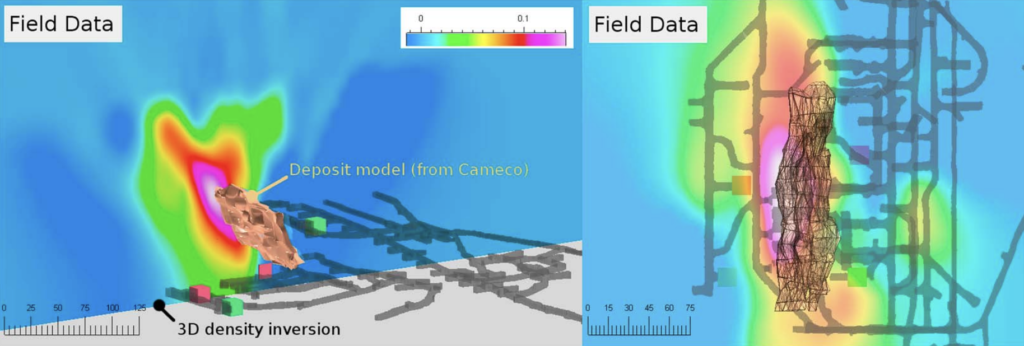

Imaging a Dense Uranium Deposit with Muon Tomography
Imaged Zone IV North U3O8 deposit at McArthur River with Ideon gallery detectors at 600 m depth. Project led by Orano with logistical support from Cameco.

McArthur River
PROJECT
Athabasca Basin, Canada
LOCATION
Gallery
IDEON DETECTOR
High-grade unconformity-related uranium
DEPOSIT TYPE
BACKGROUND
Canada’s Athabasca Basin hosts the highest-grade uranium deposits yet found. This ore body at the McArthur River mine in Saskatchewan, Canada, is near an unconformity, above the basement rock, but under almost 600 m of sandstone. In addition to the depth, other challenges include complex geology and naturally occurring radiation.
IDEON SOLUTION
Muon detectors were placed at a depth of 600 m providing a large field of view (over 1 km across on the surface) with sufficient locations to enable good 3D imaging of the deposit despite complex geology.
OUTCOME
Successfully imaging of the high-grade uranium deposit with high statistical significance, demonstrating a new technique for discovering hard these hard-to-detect deep compact high-grade deposits.

Slices through the density distribution derived by inverting muon tomography data acquired from the detectors in Chambers 2, G, and F and Bay 19. The view on the left is in the northing direction, whereas the semi-transparent view on the right is looking downward. The color scale indicates the variation in anomalous density (g/cm3) with respect to the reference uniform density.
